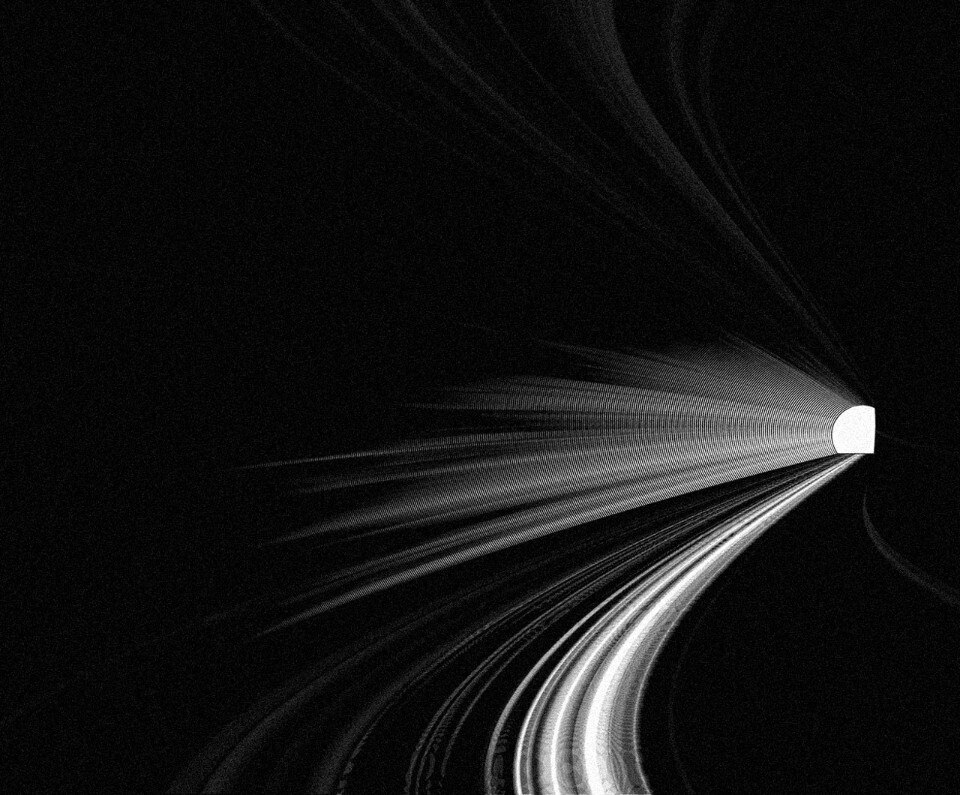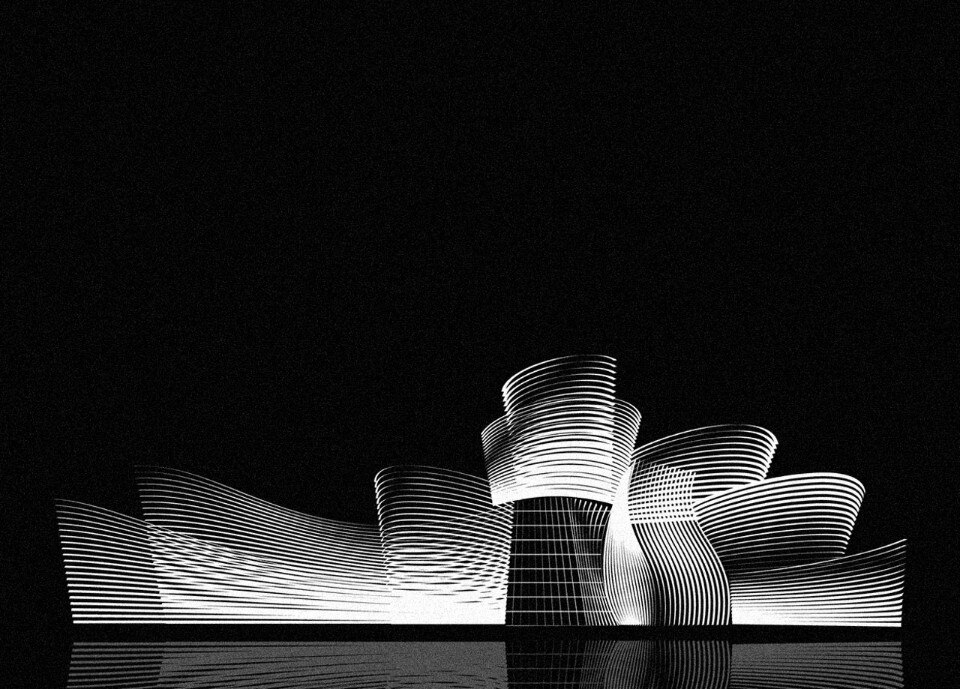
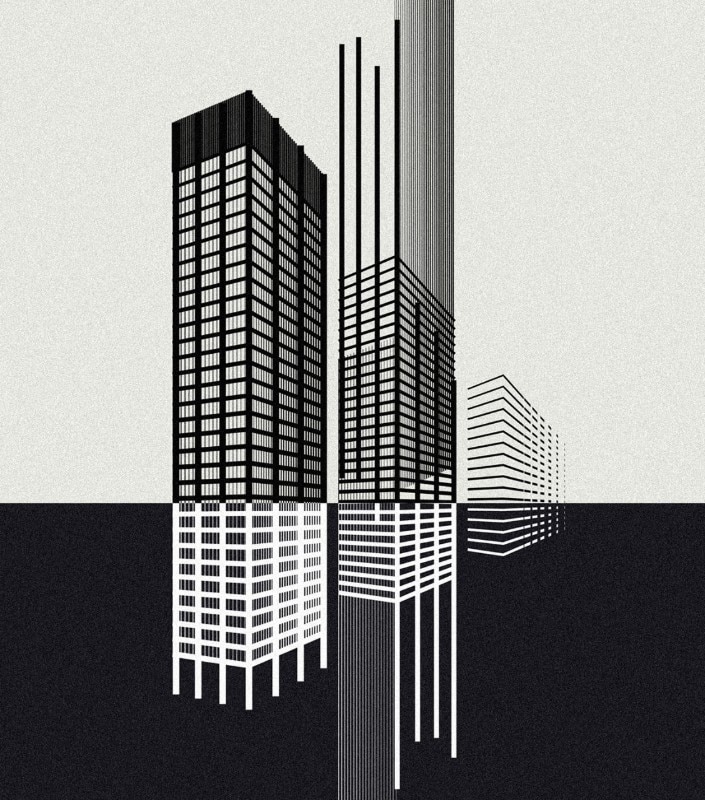
Francesca Esposito: How do you create these images?
Andrea Minini: There isn’t actually a real design or project. I try to produce a complex form using the minimum number of lines, which are interpolated. The difficulty lies in creating a synthetic form for the subject. You can remove some things and leave others, what matters is that it all flows fluidly.
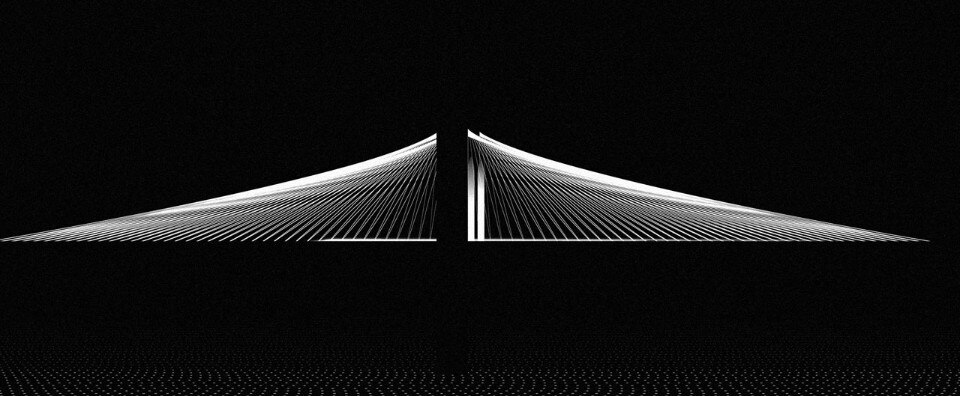
Francesca Esposito: Less is more, graphically speaking?
Andrea Minini: Both in terms of illustration form and approach, I have always tried to adopt the ethical rule of Mies van der Rohe. For this latest architecture series, I employed basic codes, dotted lines, corners and straight lines to portray something more complex.
Francesca Esposito: You have changed subjects, shifting from animals to architecture. Tell us about this new series.
Andrea Minini: I like minimalistic photography, which illustrates architecture by immortalising just the details such as the roof, the vanishing point of a corner or the geometry of buildings. In this sense, architecture lends itself greatly to my style and embraces the mathematical side – simple but also complex – of my illustrations, which some see as topographic maps. Architecture argued in these terms, via minimal subjects, seemed a good subject. I’ve created perspectives with just dotted lines and angles. I’ve played with thicknesses and, with these elements, produced something complex.
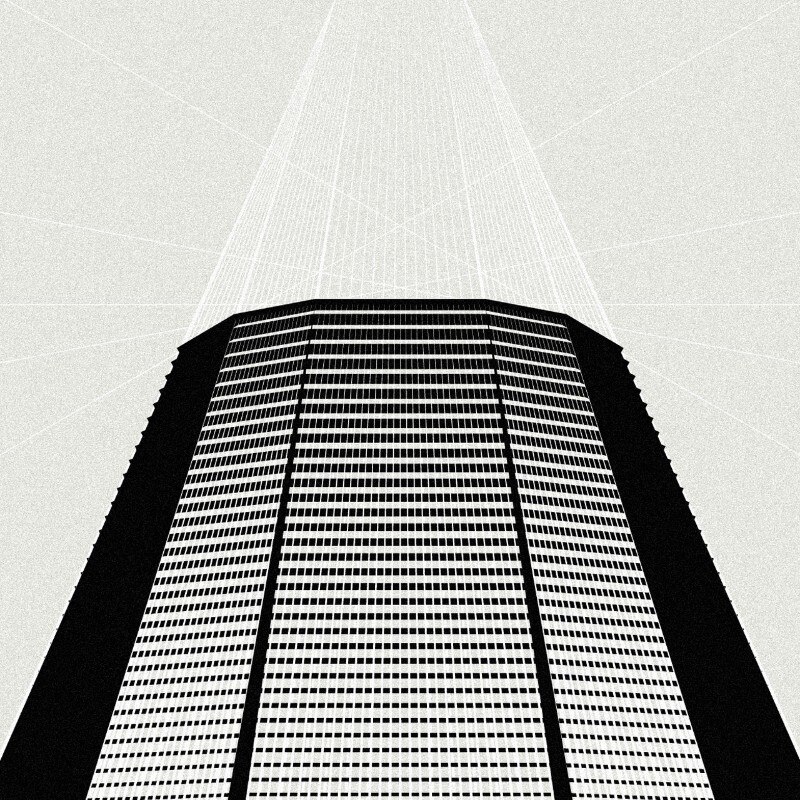
Francesca Esposito: So, it is all calculated?
Andrea Minini: I aim to be in control but, like mathematics and physics, there is always an element of chance in graphics. My illustrations make minimal use of curves when there is an automatic interpolation of lines. Ninety percent of the time, I have to redo it because the effect is wrong but it works out 10% of the time. It is a little like a blotch of colour on a canvas.
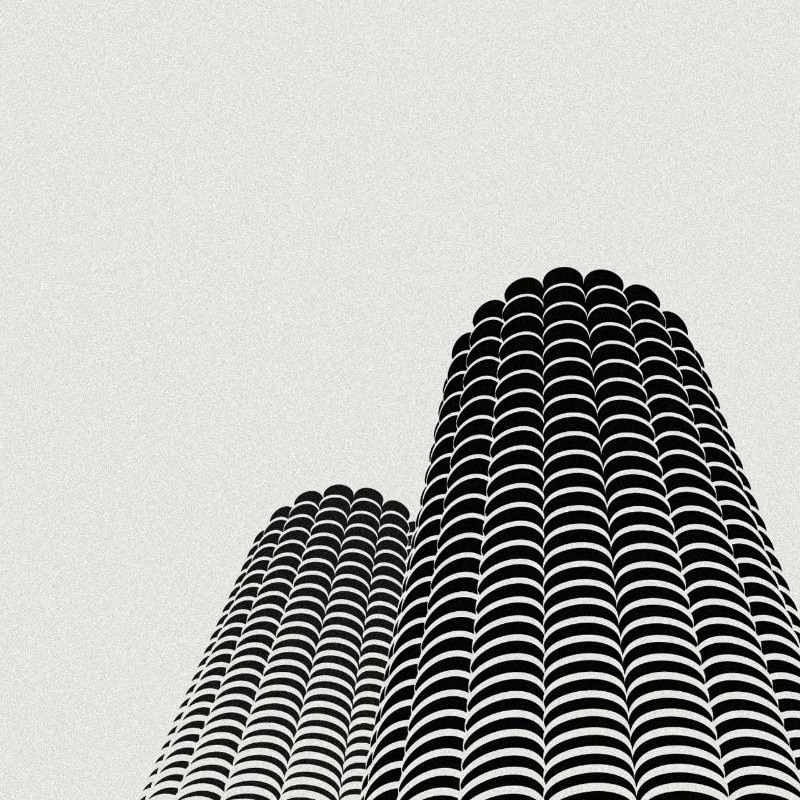
Francesca Esposito: What does error bring?
Andrea Minini: When you experiment with any kind of tool, which may be a pencil or software, something always spirals out of control. I have realised that error, when for example a type of curve behaves in a certain way, can conceal something creative. My illustrations are the fruit of research and experimentation as well as of a design method and a rigid style.
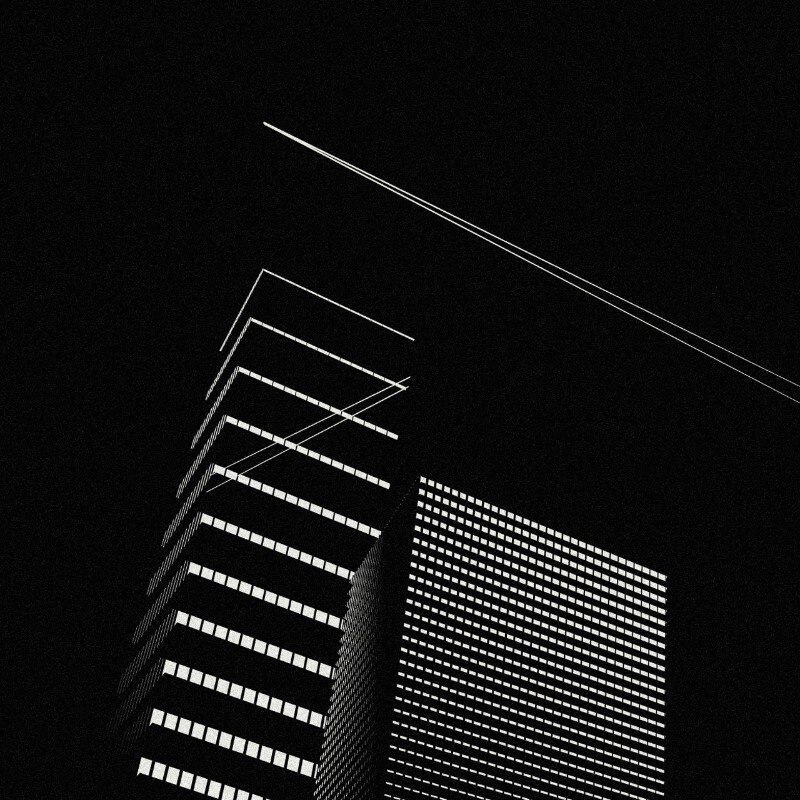
Francesca Esposito: Is it hard to capture people’s attention with an image?
Andrea Minini: People see 5,000 images in any one day; they are constantly bombarded. That is why it is so crucial to be able to show them beauty, in a flash. The secret lies in the fact that you explain things with just one image and you must be minimal, without overloading, clean and not complicated – this is an absolute value.


